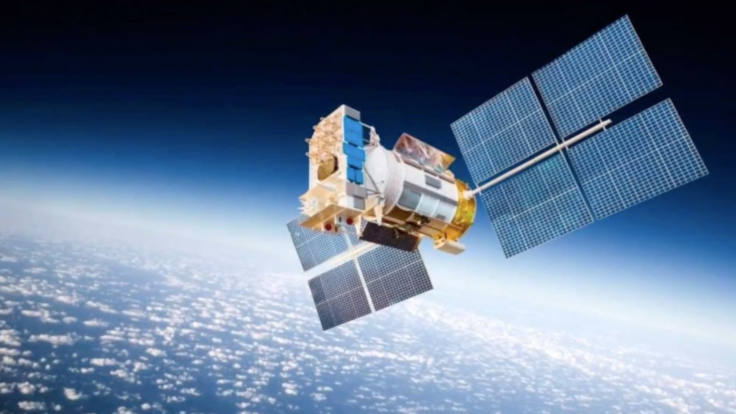
India's space telescope AstroSat may have captured images of the interstellar comet 3I/ATLAS days before NASA's official announcement, a claim now stirring global debate over data-sharing and scientific credit.
Researchers involved in AstroSat's monitoring mission say the satellite captured early signs of a fast-moving, unidentified object in late June, days before the Asteroid Terrestrial-impact Last Alert System (ATLAS) in Chile confirmed the discovery on 1 July, as reported by NASA's Planetary Defence Coordination Office.
If validated, this would mark the first time an Indian observatory detected an interstellar object before its Western counterparts, potentially reshaping the hierarchy of space discovery.
Indian Scientists Claim Early Observation
Dr Neeraj Sharma, an AstroSat project scientist, told Primetimer that the telescope detected 'a faint, fast-moving object inconsistent with any known comet or asteroid.' The team flagged the anomaly for deeper review.
Fellow astronomer Dr Meenakshi Rao said the finding underscores AstroSat's precision and India's rise as a serious player in cosmic research.
Key points:
- Detection reportedly occurred five days before NASA's official confirmation.
- Data verification and peer review are still pending.
- ISRO plans to release full datasets after international comparisons.
'If AstroSat's data holds up, it could be one of the most significant milestones for Indian astronomy,' said Dr Rao.
The Indian Space Research Organisation (ISRO) has not issued an official statement, but has confirmed that the mission team is reviewing all logs from June.
The team has not yet published its full dataset, saying it will release the information 'once verification is complete and cross-comparisons with international observatories are finalised.'
NASA's Silence Fuels Debate on Transparency
NASA has not publicly acknowledged the AstroSat claim or released any comparable data indicating it observed 3I/ATLAS before ATLAS's official detection.
The agency has, however, confirmed the object's interstellar origin and is coordinating follow-up observations with the European Space Agency (ESA).
The absence of NASA's early-detection records has fueled debate among astronomers and space policy analysts over transparency in global space science.
'If AstroSat's detection holds up, it would challenge traditional hierarchies in space observation and prove how smaller observatories can lead to major discoveries,' a senior astrophysicist told Live Science.
What Makes 3I/ATLAS Extraordinary
3I/ATLAS is only the third known interstellar object to enter the Solar System, following ʻOumuamua (2017) and Borisov (2019).
Its hyperbolic trajectory confirms it originated beyond the Sun's gravitational pull, according to ESA's analysis.
Recent studies have revealed that 3I/ATLAS is emitting an intense jet of gas and dust, with its tail showing strong carbon dioxide outgassing and traces of water ice--characteristics not typical of Solar System comets, according to Live Science.
A James Webb Space Telescope study published in August 2025 measured a CO₂-to-H₂O ratio of roughly 8, one of the highest ever recorded in a comet, suggesting 3I/ATLAS formed in an extremely cold region of another star system.
Another study hypothesises that the object may have originated from the outer frontier of the early Milky Way, according to Live Science.
Data Gap Raises Concerns
The possibility that India's observatory spotted 3I/ATLAS before NASA or ATLAS in Chile underscores the growing sophistication of emerging space programs, but it also highlights concerns about transparency and data access in international astronomy.
Experts say that without NASA's confirmation or open release of comparable observations, it remains impossible to verify India's claim.
'The race to claim first detection should not compromise open science,' one European researcher told ESA's blog. 'Data sharing is essential for confirming interstellar objects and understanding their composition collectively.'
Space Programmes Shaping Global Discovery Dynamics
AstroSat's operators at the Indian Space Research Organisation (ISRO) have pledged to publish their dataset after peer review.
NASA and ESA continue to track the comet through instruments aboard Mars Express and ExoMars, collecting compositional data as 3I/ATLAS travels across the inner Solar System.
Until India's findings are independently verified, the question remains open: Did AstroSat really beat NASA to one of the century's rarest cosmic discoveries — and, if so, why is NASA's data missing from the record?
India's claim that AstroSat detected 3I/ATLAS before NASA captures both national pride and a growing debate over scientific openness.
Whether the evidence proves conclusive or not, the episode highlights how emerging space programmes are reshaping global discovery dynamics — and why data transparency will define the next era of interstellar exploration.







